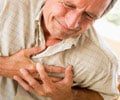Heart pump treatment can significantly boost heart muscle regeneration, offering new hope for recovery after severe heart failure.

A Latent Cardiomyocyte Regeneration Potential in Human Heart Disease
Go to source). The ability of the heart to renew myocytes is low. However, the ability to form new muscle cells after heart failure is unknown. Researchers at Karolinska Institutet have now discovered that after an injury, the rate of cell renewal is even lower than in a healthy heart.
‘Did you know?
#heartpumps boost heart cell regeneration six times more in failed heart than healthy hearts. #heartfailure #medindia ’





Standard-of-care for patients with advanced heart failure is a surgically implanted pump that helps propel blood, a so-called left ventricular assist device (LVAD).#heartpumps boost heart cell regeneration six times more in failed heart than healthy hearts. #heartfailure #medindia ’
Heart Pumps Enhance Muscle Regeneration
Surprisingly, the researchers found that patients with such a heart pump, who have shown significant improvement in their heart function, can regenerate heart muscle cells at a rate more than six times higher than in healthy hearts.“The results suggest that there might be a hidden key to kick-start the heart’s repair mechanism”, says Olaf Bergmann, senior researcher at the Department of Cell and Molecular Biology at Karolinska Institutet and last author of the paper.
The mechanism behind the effect is still unknown and there is not yet any hypothesis to explain it. “It is difficult to say. In the existing data, we cannot find an explanation for the effect, but we will now continue to study this process at a cellular and molecular level,” says Olaf Bergmann.
The findings open the possibility of developing new therapies for patients with serious heart conditions that stimulate the heart’s ability to repair itself after damage. This way, patients wouldn’t have to rely only on heart transplants or other kinds of long-term mechanical support. “This offers some hope that the recovery after a heart incident can somehow be boosted,” says Olaf Bergmann.
Advertisement
Radioactive Carbon Tracks Heart Cell Renewal
It is generally difficult to determine the age of cells in the human body and to decide which cells are new and which are old. However, by using a method earlier devised by Jonas Frisén, professor of stem cell research at Karolinska Institutet, the group has been able to count the rate of renewal of myocytes in the heart. The method is based upon the fact that the percentage of radioactive carbon in the atmosphere, and subsequently in our cells, has steadily decreased since the nuclear test ban in 1963. For every following year, there is a little less radioactivity in newly formed cells, which means that they can be ‘dated’.The study was done in close collaboration with Stavros Drakos at the University of Utah, USA, and was mainly financed by the Swedish Research Council, LeDucq Foundation, and the Ragnar Söderberg Foundation. There are no reported conflicts of interest.
Advertisement
- A Latent Cardiomyocyte Regeneration Potential in Human Heart Disease - (https://www.ahajournals.org/doi/10.1161/CIRCULATIONAHA.123.067156)
Source-Eurekalert














